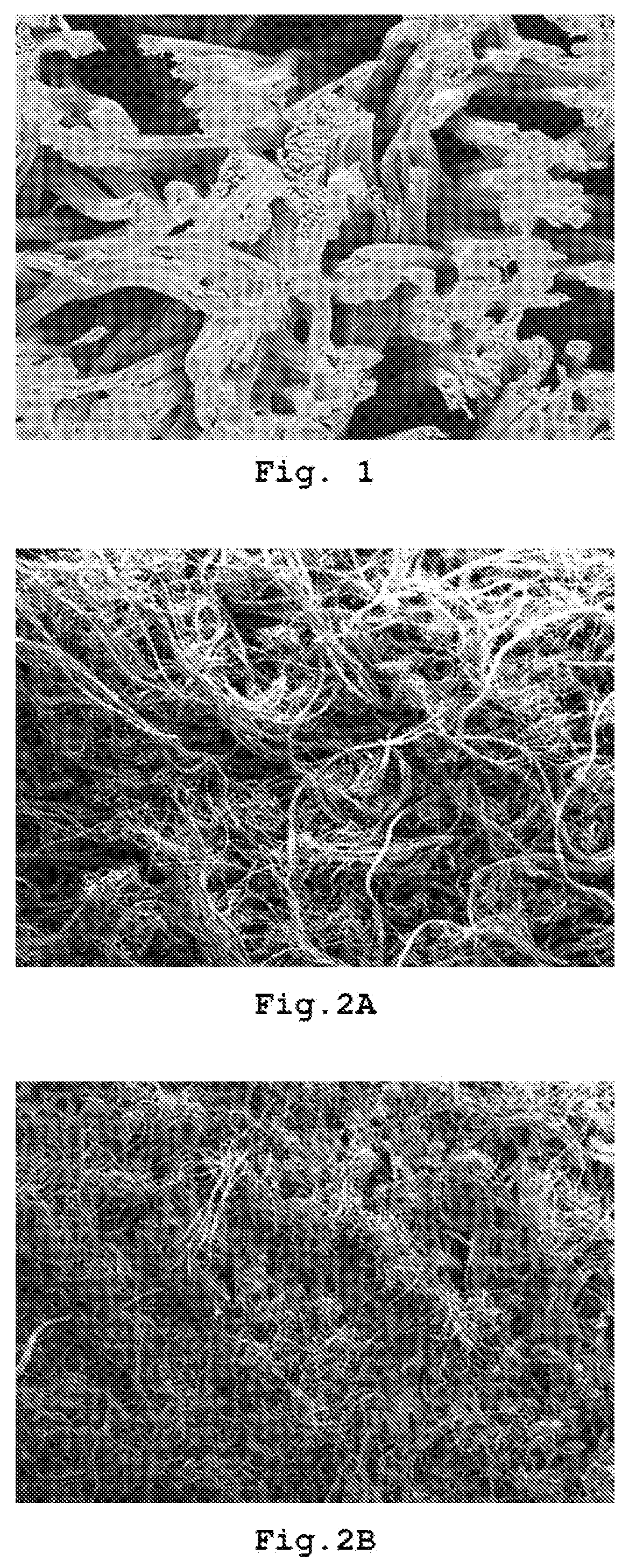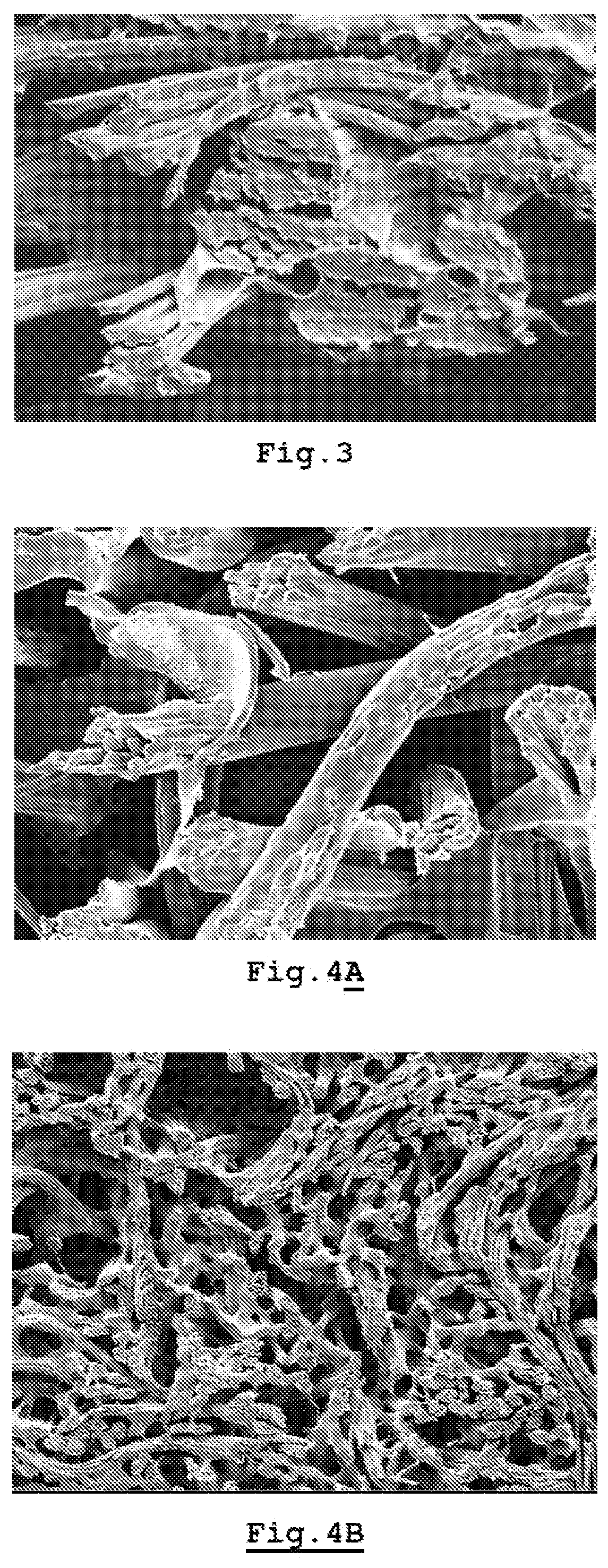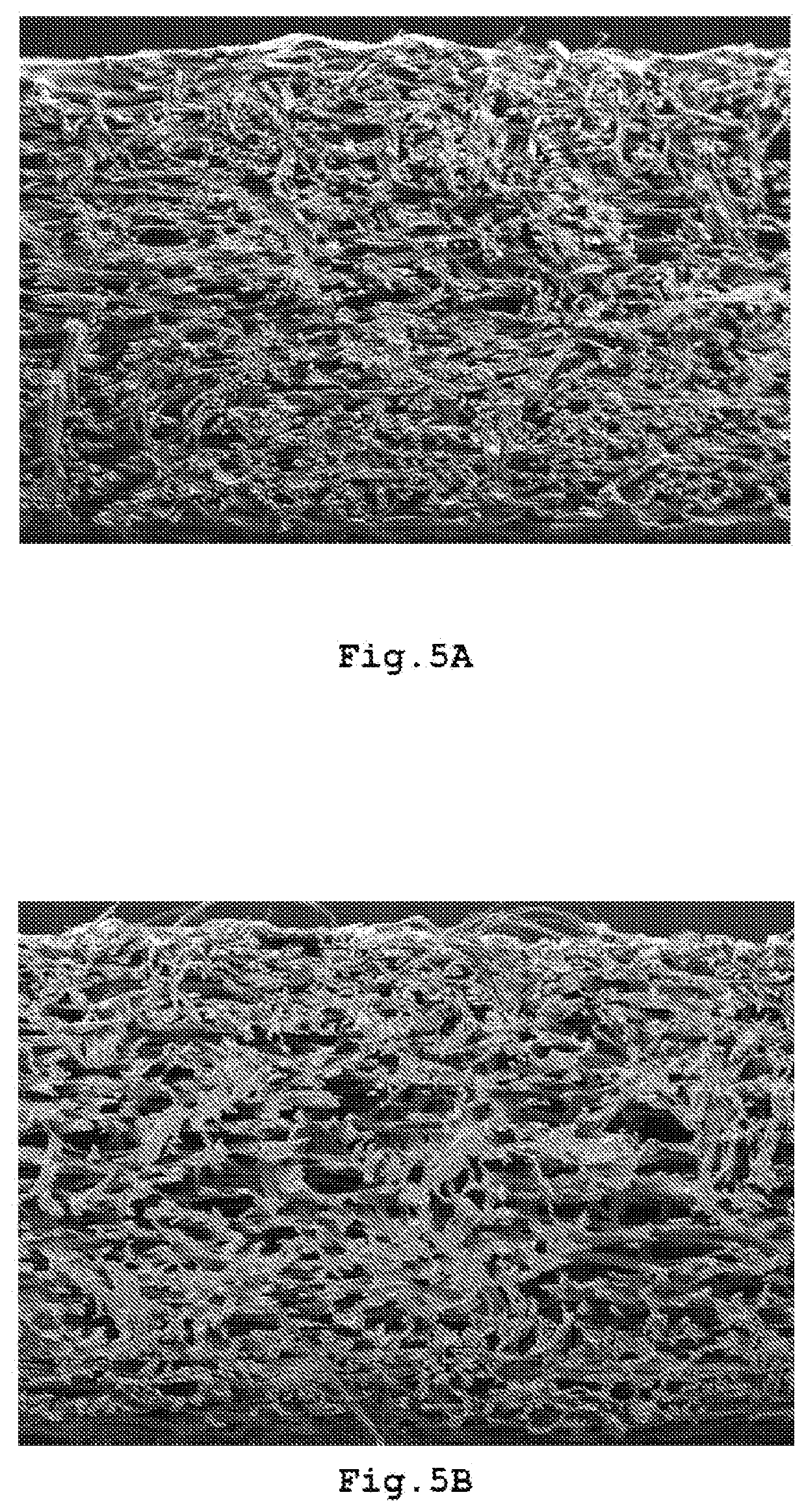Process for the preparation of a microfibrous suede-like nonwoven fabric
a technology of microfibrous and synthetic suede, which is applied in the direction of ultra-high-frequency fibre heating, yarn, filament/thread forming, etc., can solve the problems of non-woven fabric being produced stiff and unsatisfactory, the appearance of the finished product, and the general efficiency of the process. , to achieve the effect of improving physical-mechanical resistance, excellent sensory features, and softer hands
- Summary
- Abstract
- Description
- Claims
- Application Information
AI Technical Summary
Benefits of technology
Problems solved by technology
Method used
Image
Examples
examples 0
orced with Pva
[0104]In the family of examples 0, an intermediate product that is indicated as “D nth”, where n is a consecutive number, formed by microfibre and PVA is made. Occasionally, salts may be present.
example 0.1
[0105]Flock is made from a bicomponent fibre of the “island-in-the-sea” type, in which the island component is made of PET and the sea component is made of co-PES. The ratio of the island component to the sea component in the fibre is 57:43. The section of the fibre reveals 16 PET microfilaments of circular shape and equal diameter. The flock is obtained by subsequent stretching, crimping and cutting of the continuous island-sea fibre.
[0106]The features of the flock are:
denier 4.3 dtex.
length 51 mm
curliness about 4 / cm
stretch ratio 2.5:1
[0107]The flock that is thus defined is subjected to mechanical needle-punching to make a felt with a density of 0.212 g / cm3 and unit weight of 599 g / m2.
[0108]The felt undergoes dimensional retraction, going for 5 minutes into an 85° C. solution containing 11.6% PVA with a high saponification value (98%) it is dried in a first oven and is then treated in a second oven at 190° C. for 3 minutes, a sufficient time to enable thermal curing of the PVA, ind...
example 0.2
[0109]Flock is made from a bicomponent fibre of the “island-in-the-sea” type, in which the island component is made of Bio-PET and the sea component is made of Bio-coPES. The Bio-PET has been made by polycondensation of terephthalic acid and ethylene glycol that are both obtained from raw materials generated with fermentation processes and subsequent transformations. In this polymer, the percentage of material from renewable sources is 100% (>95% in terms of 14C content measured according to standard ASTM-D6866-08).
[0110]The Bio-coPES has been made by polycondensation of 5-Sulfoisophthalic acid and terephthalic acid synthesised from fossil raw materials with ethylene glycol obtained by fermentation. In this polymer, the percentage of material from renewable sources is 35% (equal to 20% in terms of 14C content measured according to standard ASTM-D6866-08).
[0111]The ratio of the island component to the sea component in the fibre is 57:43. The section of the fibre reveals 16 PET microf...
PUM
| Property | Measurement | Unit |
|---|---|---|
| temperature | aaaaa | aaaaa |
| viscosity | aaaaa | aaaaa |
| temperature | aaaaa | aaaaa |
Abstract
Description
Claims
Application Information
 Login to View More
Login to View More - R&D
- Intellectual Property
- Life Sciences
- Materials
- Tech Scout
- Unparalleled Data Quality
- Higher Quality Content
- 60% Fewer Hallucinations
Browse by: Latest US Patents, China's latest patents, Technical Efficacy Thesaurus, Application Domain, Technology Topic, Popular Technical Reports.
© 2025 PatSnap. All rights reserved.Legal|Privacy policy|Modern Slavery Act Transparency Statement|Sitemap|About US| Contact US: help@patsnap.com



